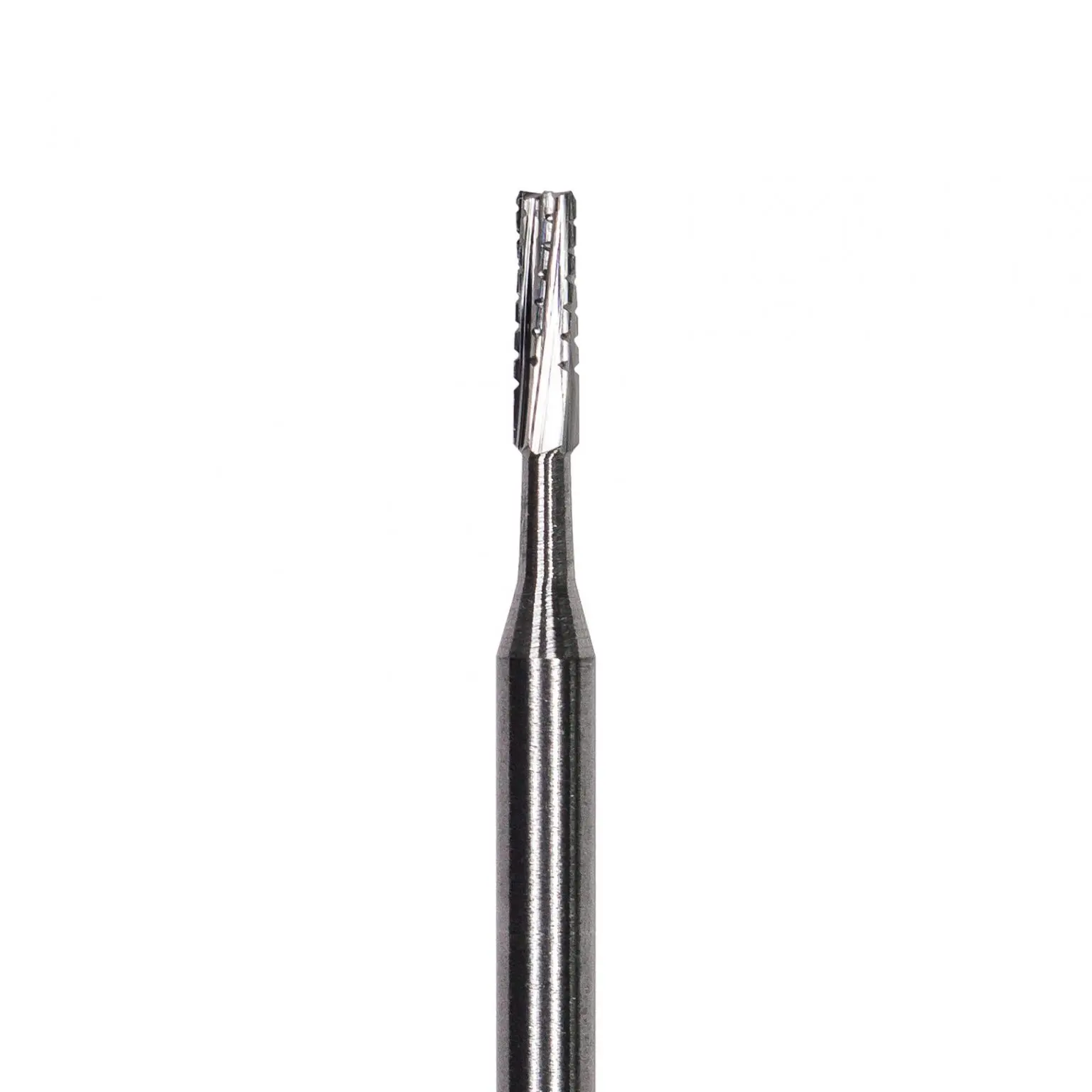Dental bits, often referred to as dental burrs, are vital tools in modern dentistry. From their intricate design and functionality to their essential role in various dental procedures, dental bits are indispensable in ensuring superior dental care. This article delves into the key aspects of dental bits, offering a comprehensive understanding of their types, materials, applications, benefits, maintenance, technological advancements, and selection criteria. Furthermore, we introduce Jiaxing Boyue Medical Equipment Co., Ltd., a prominent manufacturer in this field, extending our discussion on the standards of quality and innovation in dental bit production.
Introduction to Dental Bits
● Definition of Dental Bits
Dental bits, also known as dental burrs, are small rotary tools used in dental drills and handpieces for a range of procedures, including drilling cavities, removing decay, and polishing fillings. These precision instruments are designed to work at various speeds and are integral to dental surgeries and restorative dentistry.
● Importance in Dental Procedures
The precision and efficiency provided by dental bits significantly contribute to the success of dental treatments. They enable dentists to perform intricate procedures with minimal discomfort to patients, enhancing the overall dental care experience. Dental bits come in different shapes and sizes tailored to specific dental tasks, making them versatile tools in a dentist's arsenal.
Types of Dental Bits
● Various Kinds
Dental bits are available in various types, each designed for specific purposes. Some common types include:
- Tungsten Carbide Bits : Known for their durability and efficiency in cutting and shaping.
- Diamond Bits : Ideal for grinding and providing smoother finishes.
- Stainless Steel Bits : Used for general procedures requiring moderate strength.
● Specific Purposes of Each Type
- Tungsten Carbide Bits : Best suited for cutting through metal and hard structures, offering precision in cavity preparation and crown removal.
- Diamond Bits : Preferred for delicate tasks requiring fine abrasion, such as enamel contouring and polishing.
- Stainless Steel Bits : Typically used for a variety of general dental tasks, including caries removal and surface smoothing.
Materials Used for Dental Bits
● Common Materials
Dental bits are commonly made from high-quality materials to ensure durability and performance. The most frequently used materials include:
- Tungsten Carbide : Known for its hardness and resistance to wear.
- Diamond : Provides superior cutting efficiency and longevity.
- Stainless Steel : Offers good balance between strength and flexibility.
● Advantages and Disadvantages of Each
- Tungsten Carbide :
- *Advantages*: Extremely hard, precise, and long-lasting.
- *Disadvantages*: More brittle compared to other materials.
- Diamond :
- *Advantages*: Superior cutting ability and smoother finishes.
- *Disadvantages*: Generally more expensive than other options.
- Stainless Steel :
- *Advantages*: Corrosion-resistant and versatile.
- *Disadvantages*: Less durable than tungsten carbide and diamond.
How Dental Bits Work
● Mechanism of Action
Dental bits function by rotating at high speeds to cut, grind, or polish dental materials. They are attached to dental handpieces, which provide the necessary power and rotational force. The cutting surfaces on the bits are designed to achieve specific tasks, such as drilling holes or smoothing surfaces.
● Role in Dental Drills and Handpieces
Dental bits are crucial components of dental drills and handpieces. These devices hold the bits securely in place and allow dentists to manipulate the bits with precision. High-speed handpieces are typically used for cutting and drilling, while low-speed handpieces are employed for polishing and finishing.
Applications in Dentistry
● Drilling Holes and Preparing Teeth for Fillings
One of the primary applications of dental bits is drilling holes in teeth to remove decay and prepare cavities for fillings. The high-speed rotation of the bits ensures efficient removal of decayed material and precise shaping of the cavity.
● Removing Decay and Polishing Fillings
Dental bits are also used to remove decay from teeth and polish fillings to ensure a smooth and aesthetically pleasing finish. Different types of bits are selected based on the specific requirements of the procedure, ensuring optimal results.
Benefits of Using Dental Bits
● Precision in Dental Procedures
The precision offered by dental bits allows dentists to perform complex procedures with great accuracy. This minimizes damage to surrounding tissues and ensures optimal outcomes for patients.
● Efficiency and Time-Saving Aspects
Dental bits enable dentists to complete procedures more efficiently, reducing chair time for patients. This improves the overall dental treatment experience and allows for better practice management.
Maintenance and Care
● Cleaning and Sterilization Methods
Proper maintenance of dental bits is essential to ensure their longevity and performance. After each use, dental bits should be thoroughly cleaned to remove debris and then sterilized to prevent cross-contamination. Autoclaving is the preferred method of sterilization, as it effectively kills bacteria and viruses without damaging the bits.
● Best Practices for Prolonging Lifespan
- Regular Inspection : Regularly inspect dental bits for signs of wear or damage.
- Proper Storage : Store bits in a dry, clean environment to prevent corrosion.
- Use with Care : Avoid excessive force and use bits for their intended purposes.
Technological Advancements
● Innovations in Dental Bit Technology
Technological advancements have led to significant improvements in dental bit design and performance. Modern dental bits feature enhanced cutting surfaces, improved materials, and ergonomic designs. These innovations contribute to better precision, efficiency, and patient comfort.
● Future Trends in Dental Tools
Future trends in dental bit technology include the development of bits with enhanced biocompatibility, increased durability, and improved cutting efficiency. Research is also focused on creating bits that generate less heat and noise, further enhancing the patient experience.
Choosing the Right Dental Bit
● Factors to Consider
When selecting dental bits, several factors should be considered:
- Procedure Requirements : Choose bits that are specifically designed for the dental procedure being performed.
- Material : Select bits made from materials that offer the necessary strength and durability.
- Manufacturer Reputation : Opt for bits from reputable manufacturers known for quality and reliability.
● Recommendations for Different Dental Procedures
- Cavity Preparation : Tungsten carbide bits for precise and efficient drilling.
- Enamel Contouring : Diamond bits for smooth and accurate shaping.
- General Use : Stainless steel bits for versatility in various dental tasks.
Conclusion and Summary
Dental bits are indispensable tools in modern dentistry, offering precision, efficiency, and versatility in various dental procedures. Understanding the different types, materials, applications, benefits, and maintenance of dental bits is essential for optimizing dental care. Continual advancements in dental bit technology further enhance their performance, ensuring superior outcomes for patients.
Jiaxing Boyue Medical Equipment Co., Ltd.—a leading manufacturer—has mastered 5-axis CNC precision grinding technology and specializes in producing medical rotary cutting tools. Their main products include Dental Burs, Dental Files, Bone Drills, and tools for orthopedic and neurosurgery operations. Boyue's skilled workforce, professional technical teams, strict QC, and advanced automatic machines guarantee quality. Constantly striving for improvement, Boyue stands out in price and service in the global market, offering a wide range of carbide burrs and dental files for various needs.

Post time: 2024-10-11 10:02:03


